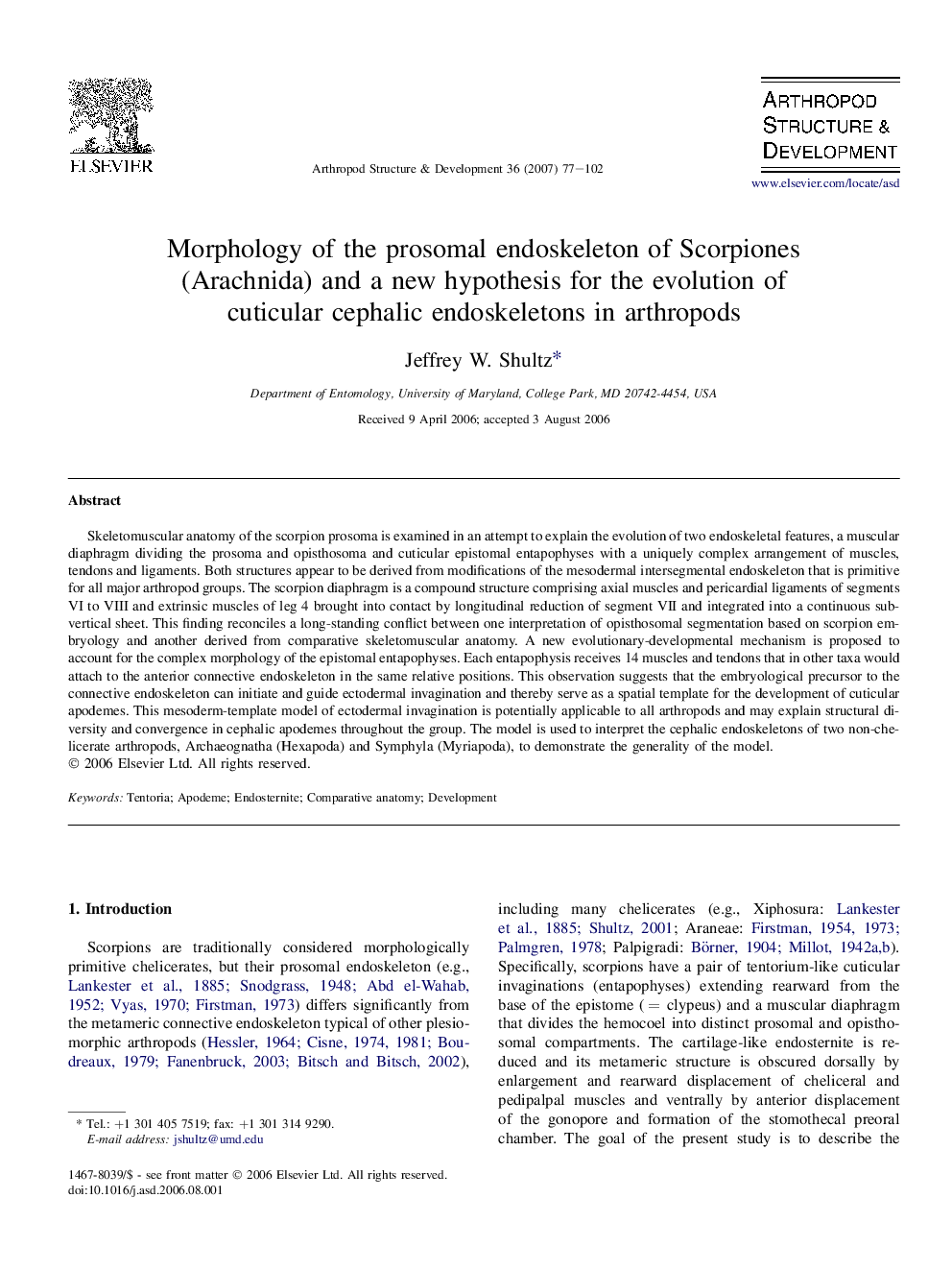| کد مقاله | کد نشریه | سال انتشار | مقاله انگلیسی | نسخه تمام متن |
|---|---|---|---|---|
| 2779107 | 1153199 | 2007 | 26 صفحه PDF | دانلود رایگان |

Skeletomuscular anatomy of the scorpion prosoma is examined in an attempt to explain the evolution of two endoskeletal features, a muscular diaphragm dividing the prosoma and opisthosoma and cuticular epistomal entapophyses with a uniquely complex arrangement of muscles, tendons and ligaments. Both structures appear to be derived from modifications of the mesodermal intersegmental endoskeleton that is primitive for all major arthropod groups. The scorpion diaphragm is a compound structure comprising axial muscles and pericardial ligaments of segments VI to VIII and extrinsic muscles of leg 4 brought into contact by longitudinal reduction of segment VII and integrated into a continuous subvertical sheet. This finding reconciles a long-standing conflict between one interpretation of opisthosomal segmentation based on scorpion embryology and another derived from comparative skeletomuscular anatomy. A new evolutionary-developmental mechanism is proposed to account for the complex morphology of the epistomal entapophyses. Each entapophysis receives 14 muscles and tendons that in other taxa would attach to the anterior connective endoskeleton in the same relative positions. This observation suggests that the embryological precursor to the connective endoskeleton can initiate and guide ectodermal invagination and thereby serve as a spatial template for the development of cuticular apodemes. This mesoderm-template model of ectodermal invagination is potentially applicable to all arthropods and may explain structural diversity and convergence in cephalic apodemes throughout the group. The model is used to interpret the cephalic endoskeletons of two non-chelicerate arthropods, Archaeognatha (Hexapoda) and Symphyla (Myriapoda), to demonstrate the generality of the model.
Journal: Arthropod Structure & Development - Volume 36, Issue 1, March 2007, Pages 77–102